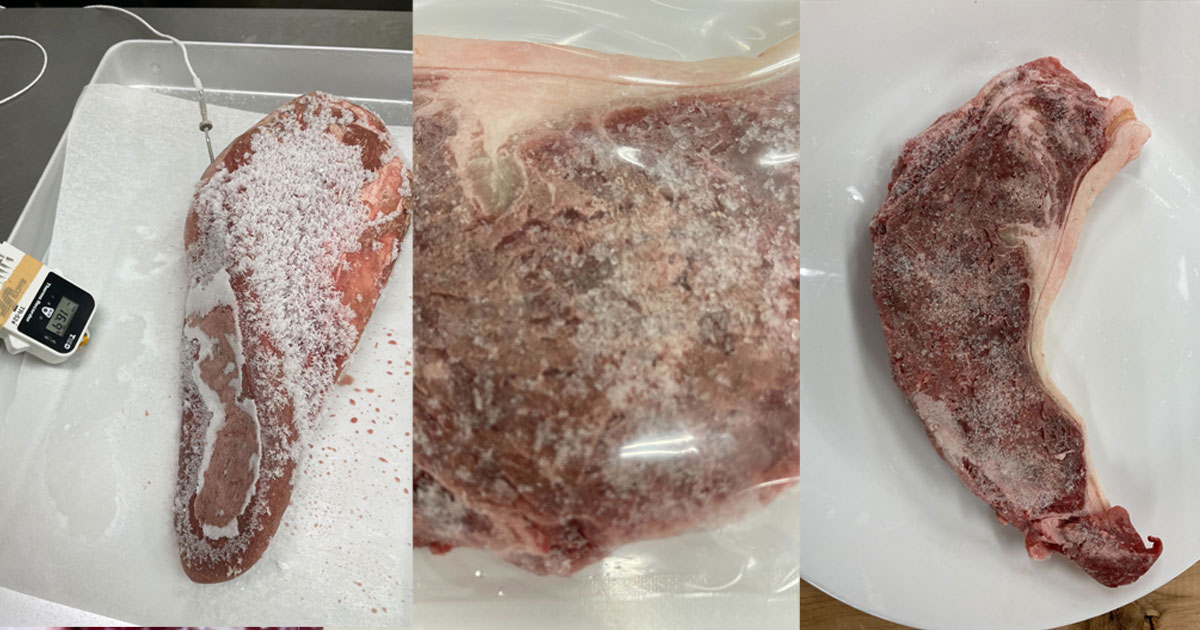[Explanation with photos! ] How to freeze hijiki and its storage period, 5 recipes!
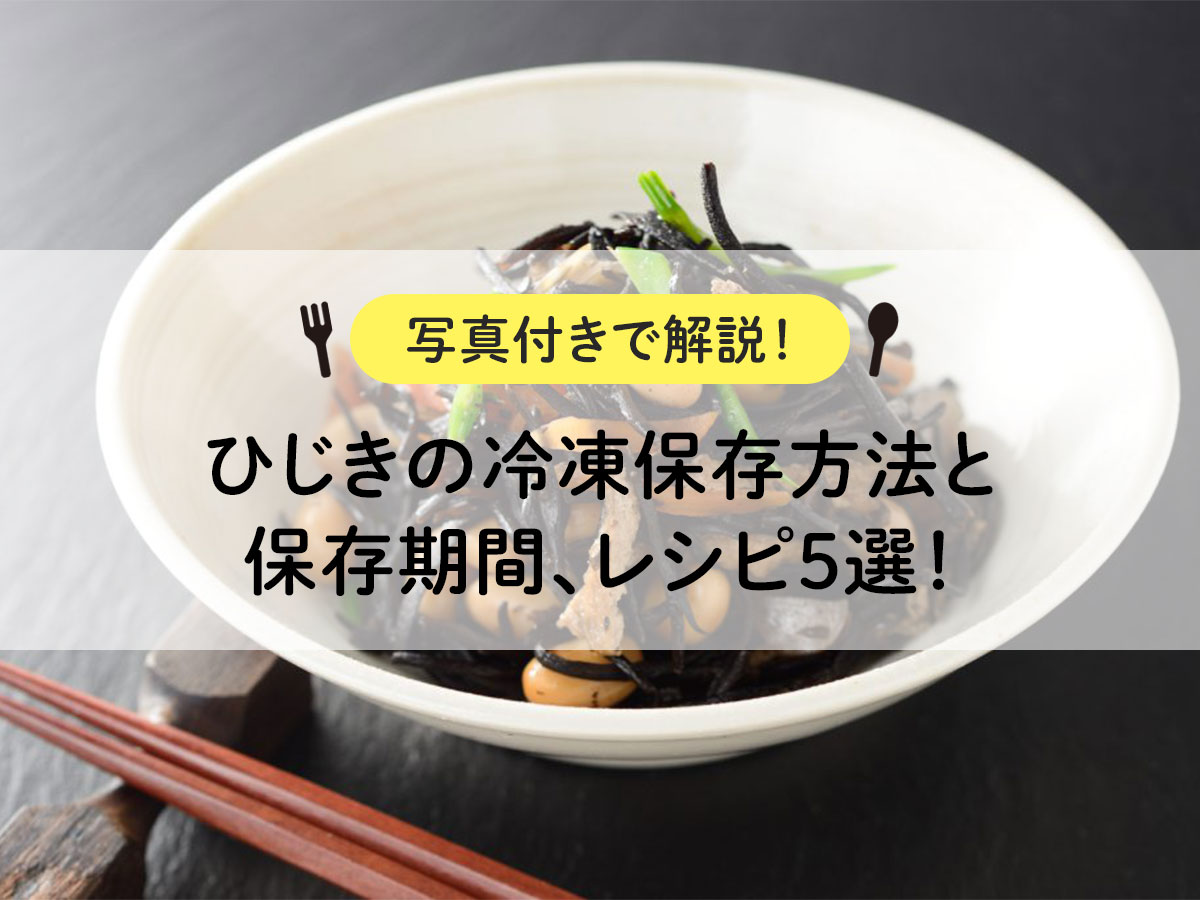
"I rehydrated the hijiki with water, but there was more than I expected and I couldn't use it all..."
Have you ever had an experience like this?
There seem to be quite a few people who are having trouble figuring out what to do with hijiki that has been rehydrated too much.
In such cases, we recommend freezing hijiki.
I'm sure many of you have seen boiled hijiki as a frozen food, and you can easily make the same thing at home.
If you are having trouble figuring out how to use hijiki, please try the methods below.
目次
Hijiki nutrition
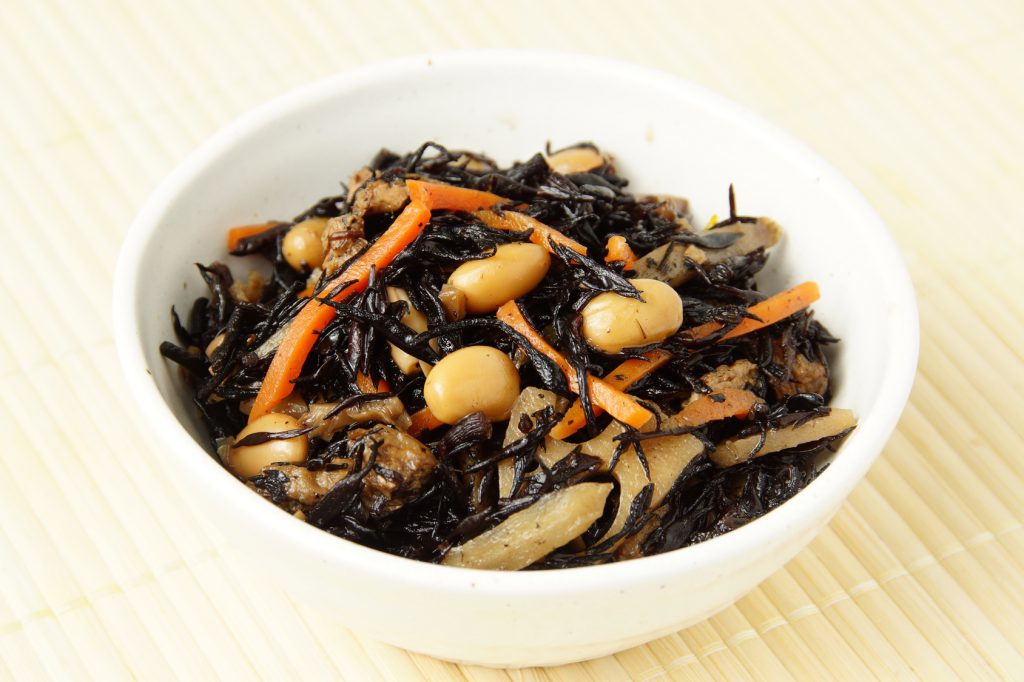
Nutritional value and calories of hijiki
Hijiki is rich in calcium, iron, and iodine.
Calcium is especially abundant, with an extremely high value of 1400mg/100g.
The calcium contained in milk is approximately 100mg/100g, so the difference is approximately 14 times more.
It is also rich in iron, with a value of 55mg/100g.
Even spinach, which is famous for its iron content, has about 2mg/100g, so you can see that hijiki has a much higher iron content.
Next is iodine, which has a value of 47,000μg/100g.
This may seem like a huge number, but iodine is actually a nutrient that is found in large amounts in seafood, and is also found in abundance in foods such as kelp.
For reference, the iodine content of kelp is approximately 200,000μg/100g (varies depending on variety).
Effects of hijiki
Hijiki is a nutritious food, so you can get various benefits from eating it.
This time, we will talk about avoiding the risk of osteoporosis and preventing anemia, which are important for women.
Let's explain them one by one.
[Avoiding the risk of osteoporosis]
This is the effect of calcium in hijiki.
Japanese people are chronically deficient in calcium, which increases the risk of osteoporosis in the future.
This is not limited to the elderly.
Even young people (especially women) often suffer from calcium deficiency due to poor eating habits or forced diets.
Calcium intake rate decreases as we get older, so it is important to get enough calcium from a young age.
[Anemia prevention]
This effect is due to the iron content in hijiki.
Iron is an essential mineral for making hemoglobin (which carries oxygen) in the blood.
A lack of iron causes a lack of oxygen in the body, leading to anemia symptoms.
This is especially noticeable in women, and for pre-menopausal women, iron is excreted from the body during each monthly menstrual cycle.
Therefore, they need more iron than men.
Hijiki is not only rich in calcium and iron, but it is also a very healthy ingredient, so women especially should actively consume it.
Advantages of freezing hijiki

Allows long-term storage
The first advantage of freezing hijiki is that it can be stored for a long time.
As I mentioned at the beginning, dried hijiki is an ingredient that can be stored for a long time even at room temperature.
However, it is sensitive to moisture, so you need to be careful about mold, especially during the rainy season and summer when the humidity increases.
If you keep it frozen, you won't have to worry about mold.
On the other hand, if you return hijiki to water, its shelf life will be shortened.
Specifically, once returned to water, hijiki will only last for about 2 to 3 days.
However, if you rehydrate hijiki and freeze it, you can preserve it for several months.
From this point of view, there are great benefits to freezing hijiki.
Reduces cooking time
Another benefit of freezing hijiki is that it reduces cooking time.
Hijiki can be frozen even if it has been rehydrated or boiled.
This saves you the 20 to 30 minutes it would normally take to reconstitute the water and the several tens of minutes it takes to boil it.
Hijiki is a highly nutritious food, but the drawback is that it takes a long time to cook.
However, if you freeze the hijiki that has been prepared in advance, you can save tens of minutes of time and the hassle of changing the water.
By using frozen storage, you can easily bring hijiki to your table.
How to freeze hijiki
When freezing unopened
If the bag of hijiki is unopened, you can freeze the whole bag.
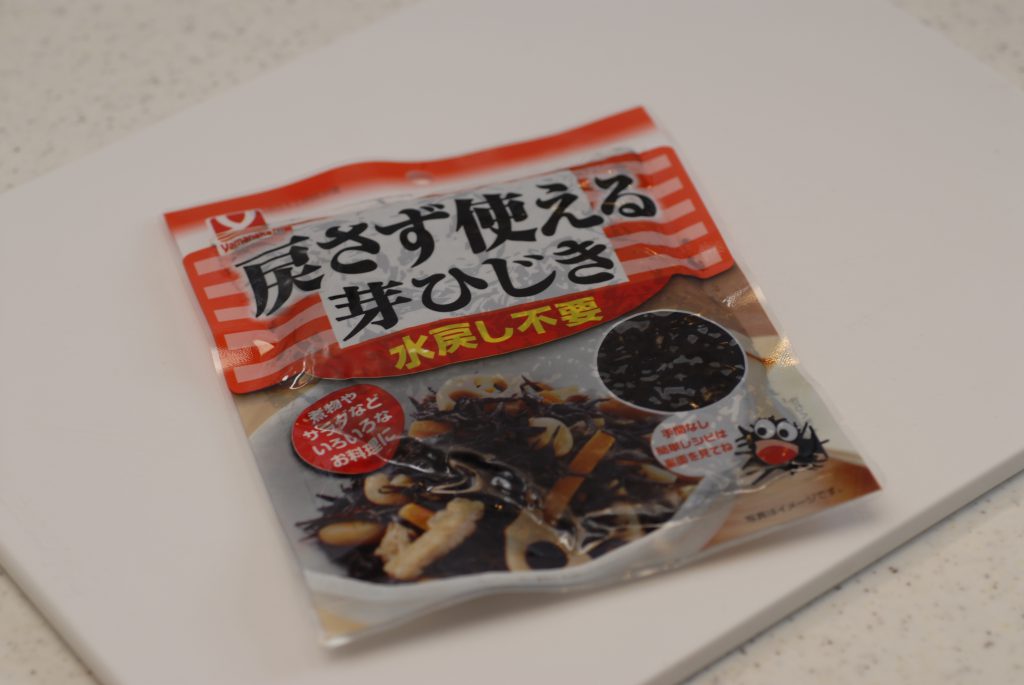
At that time, if you place the food on a metal tray and freeze it, you can freeze it without losing its freshness or texture.
When freezing opened items
If you have opened the hijiki even once, put the whole bag in a freezer bag and freeze it.
At this time, rapid freezing is also possible by placing the food on a metal tray and freezing it.
When freezing something that has been rehydrated
If you want to rehydrate hijiki before freezing, follow the steps below.
1. Place the hijiki in a bowl filled with water and remove any debris.
2. Change the water and let it sit back in the water for about 15 minutes.
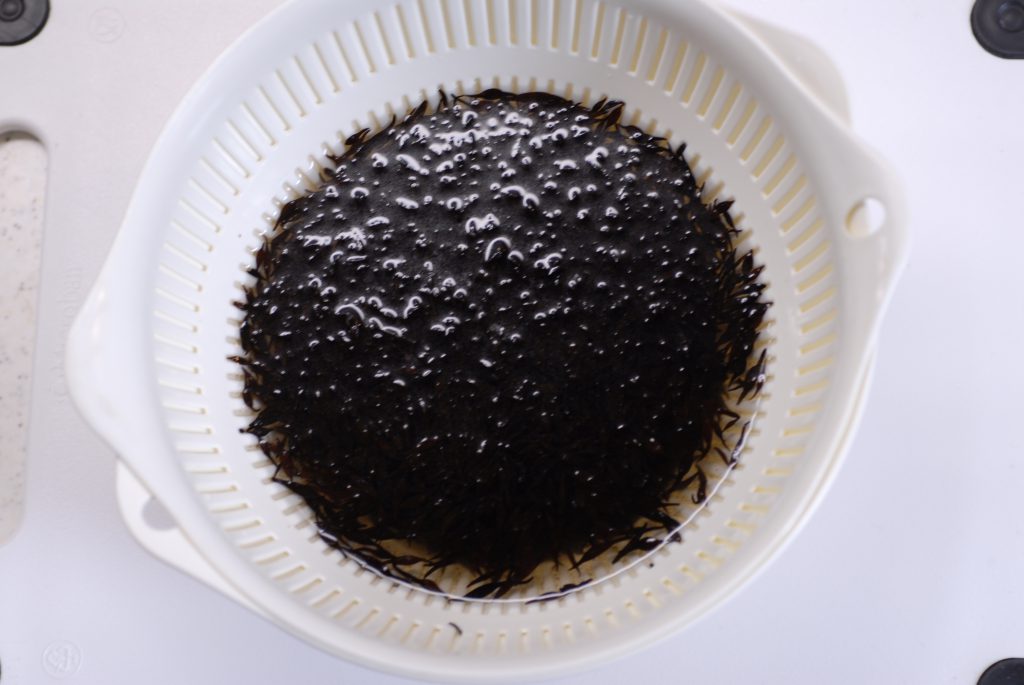
3. Drain and freeze in freezer bags.
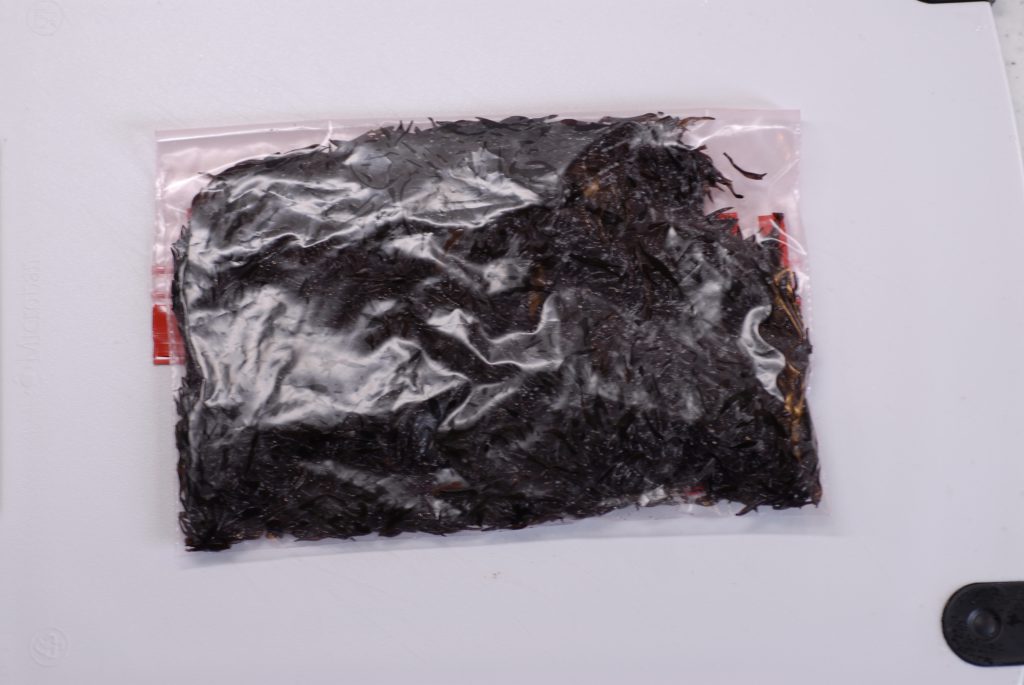
★When closing the opening of the freezer bag, remove the air and lay it flat to make it easier to use when defrosting.
When boiling and freezing
You can also boil hijiki and then freeze it. In that case, it is best to follow the steps below.
1. Boil the hijiki until sweet and spicy (adjust the seasoning to your liking).
2. Wrap in plastic wrap in convenient amounts and freeze in freezer bags.
How to thaw hijiki and how long to store it
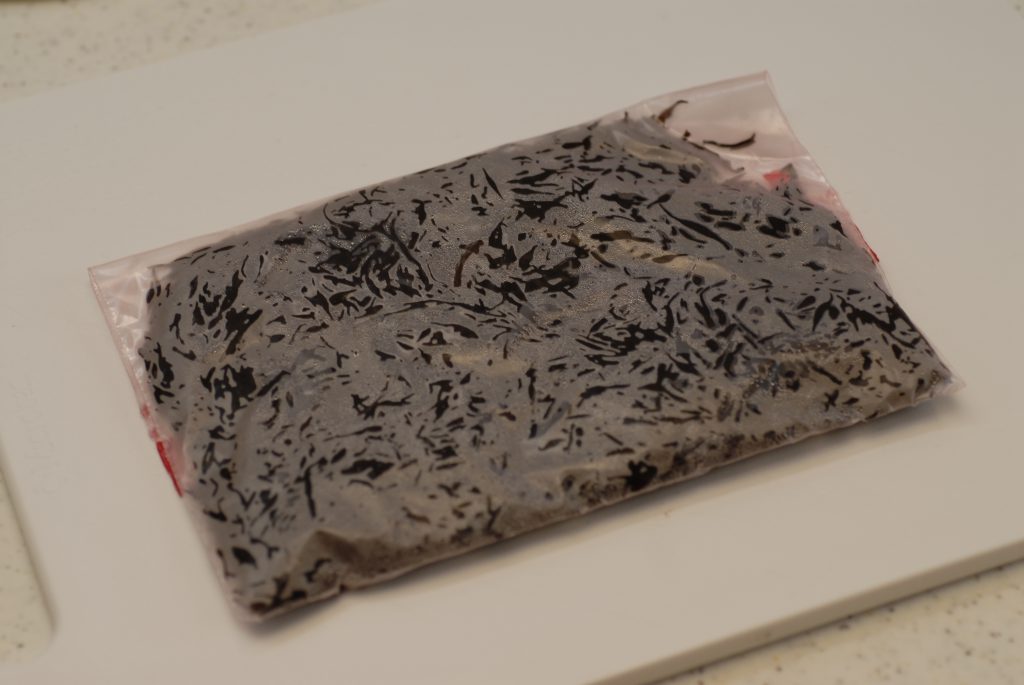
How to defrost hijiki
Unopened/opened/rehydrated products can be used frozen for cooking.
If you need to thaw it, you can thaw it naturally at room temperature, or if you're in a hurry, you can thaw it in the microwave.
If you want to thaw boiled food, you can thaw it naturally at room temperature or in the microwave.
Also, if you want to put frozen hijiki stew in a bento, you can put it in the frozen state (as it will thaw by lunchtime).
For this reason, it is convenient to divide it into small portions and freeze them.
Storage period of hijiki
The shelf life of unopened/opened/rehydrated products is 3-4 months.
Boiled and frozen foods have a shelf life of 3 to 4 weeks.
If you are worried that you will forget the storage date, we recommend that you write the storage start date and time on the freezer bag.
One thing to be careful about is refreezing hijiki once thawed.
If you repeatedly thaw and then freeze hijiki, or any other food item, the flavor and texture will gradually deteriorate.
So, once you defrost it, be sure to use it up.
5 easy recipes using hijiki
Tofu hamburger with hijiki

Source: https://cookpad.com/recipe/4451242
☑材料(4人分)
・木綿豆腐 450g
・豚ミンチ 200g
・塩 3g
・こしょう 少々
・しょうが 10g程度
・戻したひじき 50g
・長ネギ 15㎝程度
・卵 1個
・パン粉 大さじ3
・片栗粉 大さじ1
●濃口しょうゆ 大さじ1
●みりん おおさじ1
●酒 大さじ1
●砂糖 小さじ1
<How to make>
1) Heat the firm tofu in the microwave, drain the water until it weighs about 350g, and let it cool.
2) If the frozen hijiki is dried, rehydrate it in water, and if it has been rehydrated beforehand, thaw it at room temperature or in the microwave.
2) Sprinkle salt and pepper on the minced pork and mix well until it becomes sticky.
3) Add drained tofu, hijiki, chopped ginger, green onions, eggs, bread crumbs, and potato starch and mix.
4) Divide into 8 equal parts and roll.
5) Heat oil in a frying pan and fry until browned on both sides, then add the seasonings marked ● and it's done.
★The key is to drain the tofu thoroughly.
A standard lunch box! simmered hijiki
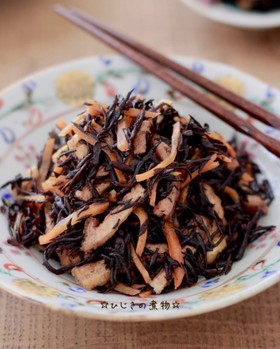
Source: https://cookpad.com/recipe/1489000
☑材料(常備菜用にたくさん)
・戻したひじき 80g
・にんじん 1/2~1本
・油揚げ 1枚
●醤油 大さじ2
●みりん 大さじ2
●砂糖 大さじ2
●酒 大さじ2
●水 200cc
●顆粒だし 小さじ1
・サラダ油 大さじ1
<How to make>
1) Dried frozen hijiki can be rehydrated in water, and those that have been rehydrated in advance can be used frozen.
2) Finely chop the carrots and fried tofu.
3) Heat salad oil in a frying pan and fry the carrots.
4) Add hijiki and fried tofu and stir-fry further.
5) Add the seasonings (●), cover with a lid, and simmer over low heat until the broth stops flowing.
Hijiki cooked rice
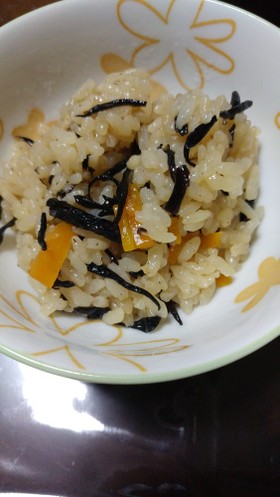
Source: https://cookpad.com/recipe/4455918
☑材料(4人分)
・米 2合
・戻したひじき 20g
・にんじん 2/3本
・油揚げ 1枚
・水 2合分(普段より気持ち少な目)
●醤油 大さじ2
●みりん 大さじ2
●調理酒 大さじ2
●砂糖 大さじ1
●ごま油 大さじ1
●だしの素 小さじ1
<How to make>
1) Dried frozen hijiki can be rehydrated in water, and those that have been rehydrated in advance can be used frozen.
2) Pour hot water over the fried tofu to remove the oil.
3) Cut the fried tofu and carrots into strips and put them in the rice cooker with the rice, water, and hijiki.
4) Finally, add the seasonings marked ●, then start cooking the rice.
Easy hijiki salad
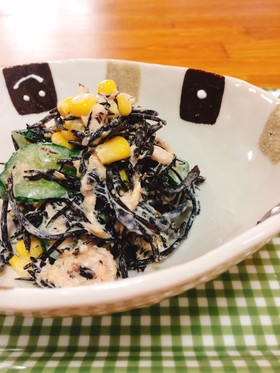
Source: https://cookpad.com/recipe/4446535
☑材料(4人分)
・戻したひじき 100g
・きゅうり 1本
・ツナ 1缶
・コーン お好みで
・マヨネーズ 大さじ2~3
・塩コショウ 少々
<How to make>
1) For frozen hijiki, rehydrate dried hijiki in water, and use frozen ones that have been rehydrated in advance.
2) Fill a pot with hot water and quickly boil the hijiki.
3) Sprinkle salt on the cucumbers and drain them, and drain the oil from the canned tuna.
4) Season the hijiki, cucumber, corn, tuna, and mayonnaise with salt and pepper to complete the dish.
Tamagoyaki with boiled hijiki
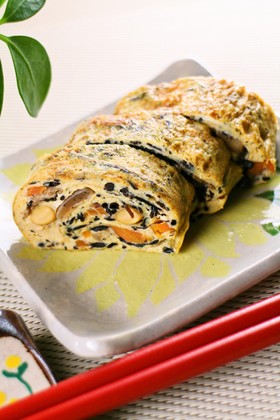
Source: https://cookpad.com/recipe/2377955
☑材料(1~2人分)
・ひじきの煮物 100g
・卵 2個
・サラダ油 小さじ1
<How to make>
1) Defrost the frozen hijiki stew at room temperature or in the microwave.
2) Crack the eggs into a bowl and mix well.
3) Add the boiled hijiki together with the broth and mix roughly.
4) Heat oil in a frying pan and pour (3) over medium heat. Before the eggs set, smooth out the hijiki mixture evenly.
5) Use a spatula or similar to wrap the hijiki to prevent it from spilling out, and it's done.
★This recipe uses frozen hijiki stew.
★For a simple seasoning that brings out the flavor of the simmered dish, please adjust the sugar and soy sauce accordingly.
Conclusion
How do you freeze hijiki?
Hijiki can be frozen dried, rehydrated, or boiled.
All freezing methods are easy, and most can be made with just a freezer bag.
Frozen hijiki can be cooked while frozen, or depending on the situation, it can be thawed at room temperature or in the microwave.
Hijiki has many benefits for the body, so please take advantage of freezing it and incorporate it into your daily diet.
>> Click here for how to freeze meat
>> Click here for how to freeze fish
>> 3 points to keep in mind when preserving vegetables








![[Storage period increased by 30 times! ] Achieving a stable supply of raw whitebait!](https://shunkashutou.com/wp-content/uploads/2016/11/579c55e6d32e1385c250e8e7c3ed59a71.jpg)
![[Sales increased 100 times! ] rapid freezing the signature menu “Ni-katsu sandwich”!](https://shunkashutou.com/wp-content/uploads/2016/11/IMG_02391.jpg)
![[Horse sashimi] We have significantly reduced waste loss with rapid freezer!](https://shunkashutou.com/wp-content/uploads/2016/11/5fda59d0cbcdabde18e58c3c58c09ed0.jpg)




![[Storage period increased from 3 days to half a year! ] Restaurants are expanding their business using wholesale and mail order!](https://shunkashutou.com/wp-content/uploads/2018/04/66c19942ab4ba346fdb64ccc04cde373.png)
![[Reduce loss from 200 kg of oysters to zero] Improve loss and expand business with rapid freezer](https://shunkashutou.com/wp-content/uploads/2018/06/19785ca583a8d3c4041c7c192d041b0d.jpg)














![[Can it be frozen? ] 5 recipes for yogurt freezing and shelf life!](https://shunkashutou.com/wp-content/uploads/2023/10/yogurt-catch-768x512-1.jpg)
![[Easy and delicious] How to make and thaw frozen eggs, applied recipes](https://shunkashutou.com/wp-content/uploads/2023/08/6b20ec40a9845d4a62952c143f83456f.jpg)
![How to freeze zucchini and 5 recipes! [Explanation with photos! ]](https://shunkashutou.com/wp-content/uploads/2023/10/zucchini6-768x512-1.jpg)
![[Osechi remake dishes too! ] Introducing the method and recipe for freezing black beans](https://shunkashutou.com/wp-content/uploads/2023/09/9bcd5b0667eef32b7c7daf786e01172f.jpg)
![[Includes grilling instructions] How to freeze hamburger steak, storage period, and carefully selected recipes!](https://shunkashutou.com/wp-content/uploads/2023/09/eb3a531f7fd023f973240f698c092b64.jpg)
![How to freeze rice balls, storage period, and arranged recipes [use leftover rice]](https://shunkashutou.com/wp-content/uploads/2023/10/2431752695ba1372808f3603c896a5d3.jpg)
![[Explanation with photos] How to freeze octopus, storage period, and 5 recipes!](https://shunkashutou.com/wp-content/uploads/2023/10/5128a2b3fa3cc254cffab87821372215.jpg)
![[8 times more nutrition! ] Introducing how to freeze clams, storage period, and 5 recipes](https://shunkashutou.com/wp-content/uploads/2023/10/57204e2a2f115f810e29e365cfc86638.jpg)
![Introducing how to freeze corn and recipes [Explanation with photos! ]](https://shunkashutou.com/wp-content/uploads/2023/08/195a6cd4120bbae043606a677c71a7dc.jpg)
![[Fruit becomes dessert! ] How to freeze kiwi and sweets recipes](https://shunkashutou.com/wp-content/uploads/2023/09/ecc0fc2bc14391ea13ce2e7a43d1416e.jpg)
![[Explaining how to freeze fish! ] Introducing storage period and thawing method!](https://shunkashutou.com/wp-content/uploads/2023/08/a794d4ac4e5f56cd881ba06a0edf9449.jpg)
![How to freeze chicken, storage period, and 5 recipes! [Explanation with photos! ]](https://shunkashutou.com/wp-content/uploads/2023/08/01f6582931e13522ee0d1ee900be2d1d.jpg)
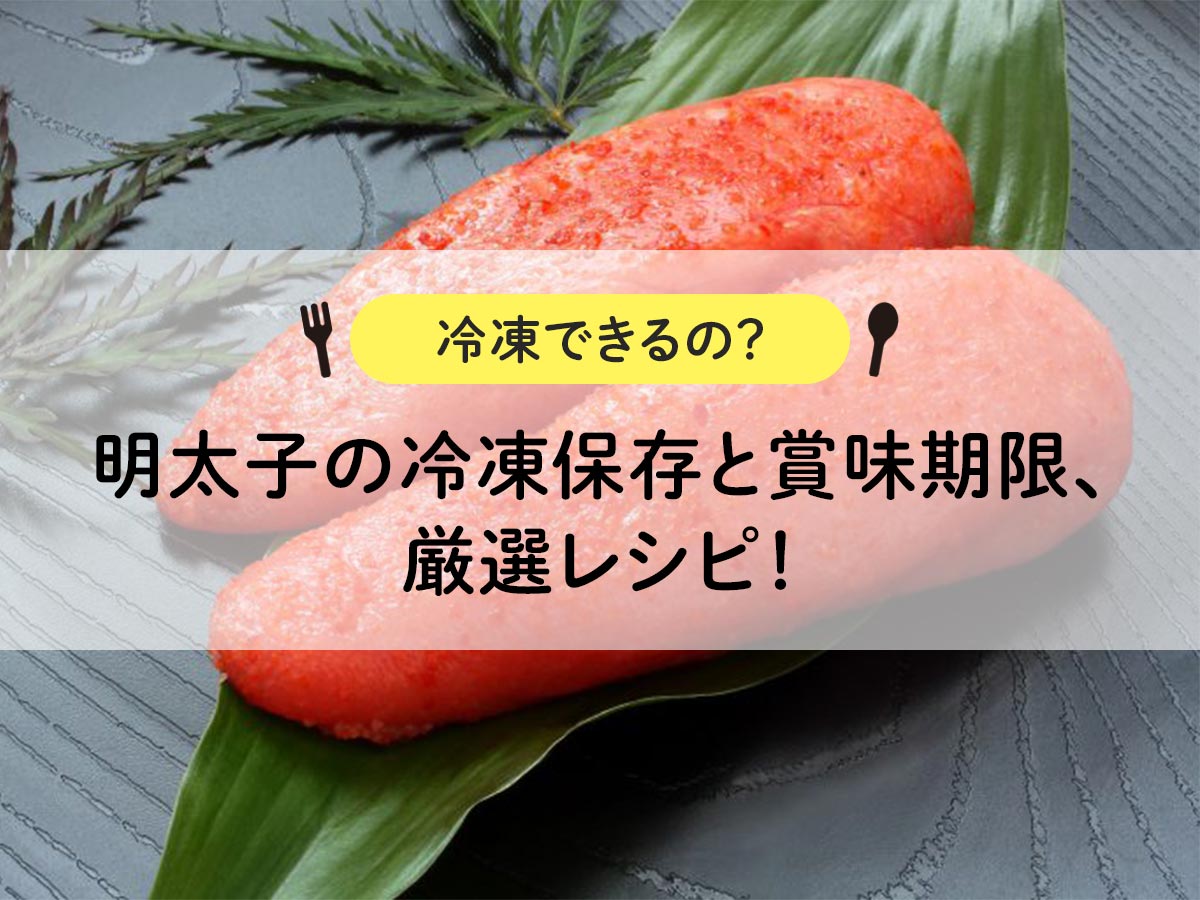
![[Should be frozen! ? ] How to freeze and thaw bread, 5 carefully selected recipes!](https://shunkashutou.com/wp-content/uploads/2023/10/4691acc32cab80284fa0cddf72d58e95.jpg)
![Thorough explanation of how to freeze eggplant and its storage period! [Explanation with photos! ]](https://shunkashutou.com/wp-content/uploads/2023/08/03fe8d79948a39047616383e2d3fb64a.jpg)
![Introducing how to freeze mushrooms and recipes [Explanation with photos! ]](https://shunkashutou.com/wp-content/uploads/2023/09/a4b193bf883e378a4d3fb316b2edaf43.jpg)
![[Thorough guide to preserving meat] Preservation methods, expiration dates, thawing methods, rapid freezing](https://shunkashutou.com/wp-content/uploads/2023/09/ec61889773cfed9c75aa97d9ca6c96dd-1.jpg)
![[Freshly made raw soba all over the country! ] Example of introducing a quick freezer at a soba restaurant](https://shunkashutou.com/wp-content/uploads/2024/09/6d8138adcf26c410c11b25d5b8d2f3de.webp)
![[Explanation with photos] How to freeze peaches, storage period, and 5 recipes!](https://shunkashutou.com/wp-content/uploads/2023/09/b454a38d482a64b14d55d2560aa4193a.jpg)
![[Various recipes] 3 tips for using frozen minced meat deliciously](https://shunkashutou.com/wp-content/uploads/2023/08/e9b2fc255393916ab79ea8b7fa0807d3.jpg)
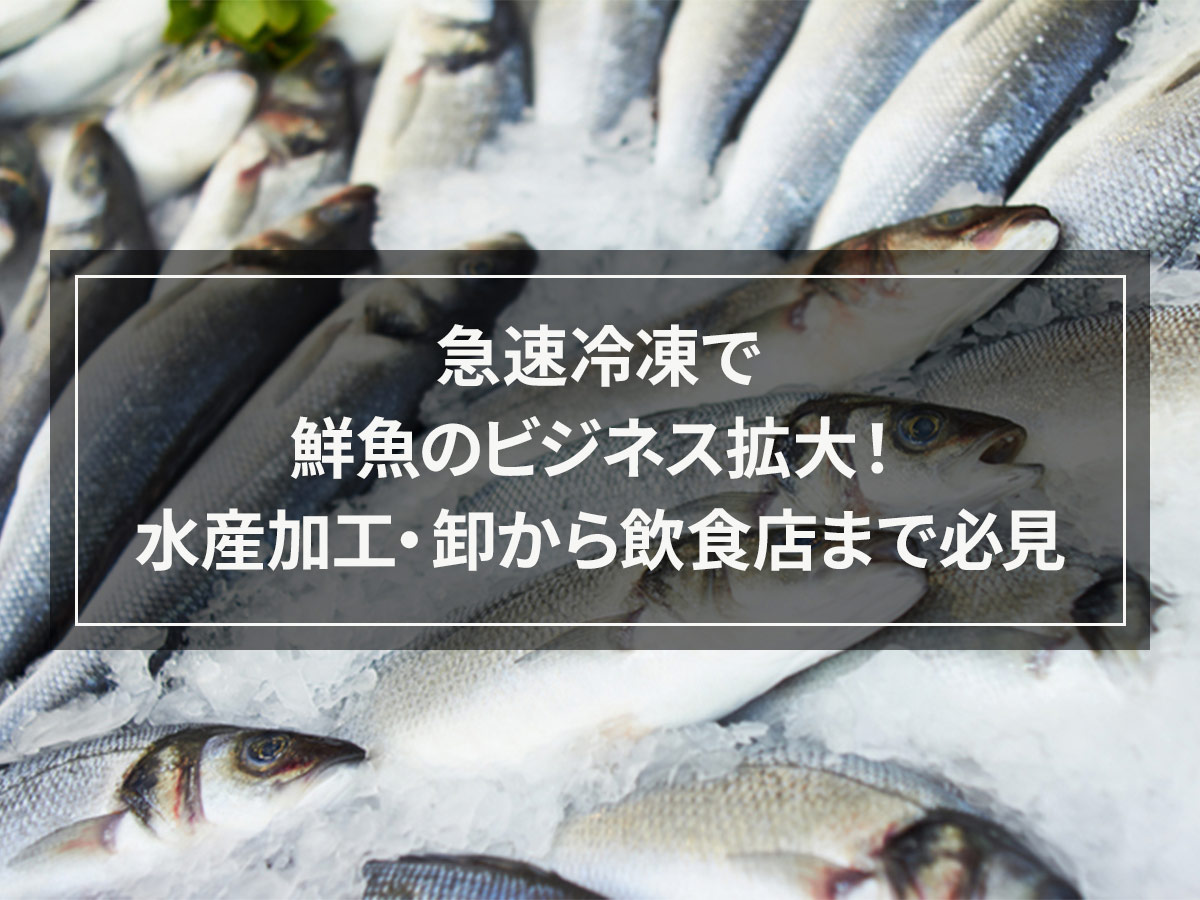
![[How long does frozen fish and meat last? ] Interesting expiration dates and tips to extend the shelf life](https://shunkashutou.com/wp-content/uploads/2023/08/f124221382987fe32d0ffda6b6f497c1.jpg)
![[Recommended for making lunch boxes! ] Delicious ways to use frozen foods](https://shunkashutou.com/wp-content/uploads/2023/09/m-frozen-food-bento_eyecatch.jpg)
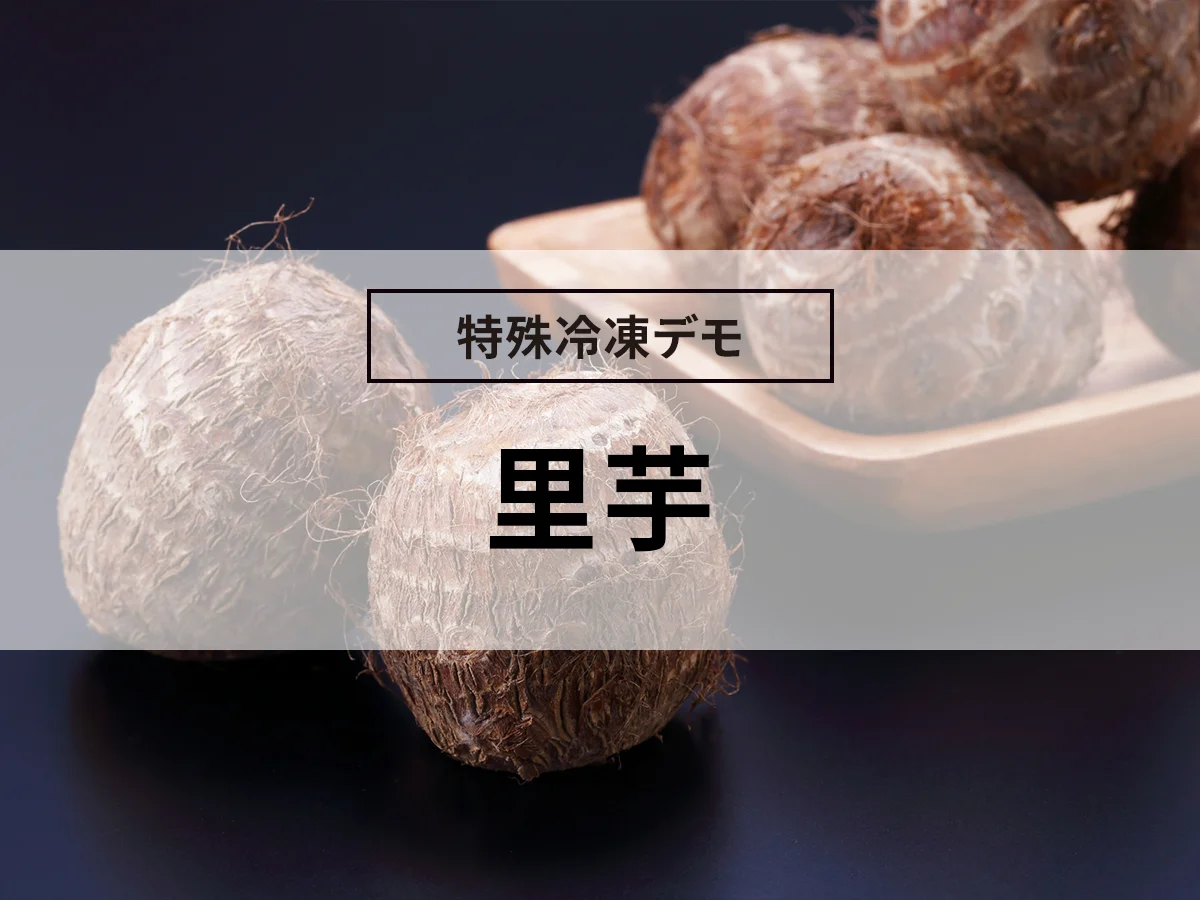
![[Can it be frozen? ] Introducing the recipe and how to freeze potato salad!](https://shunkashutou.com/wp-content/uploads/2023/10/3c640cd23d65764c14f701d25970ed59.jpg)

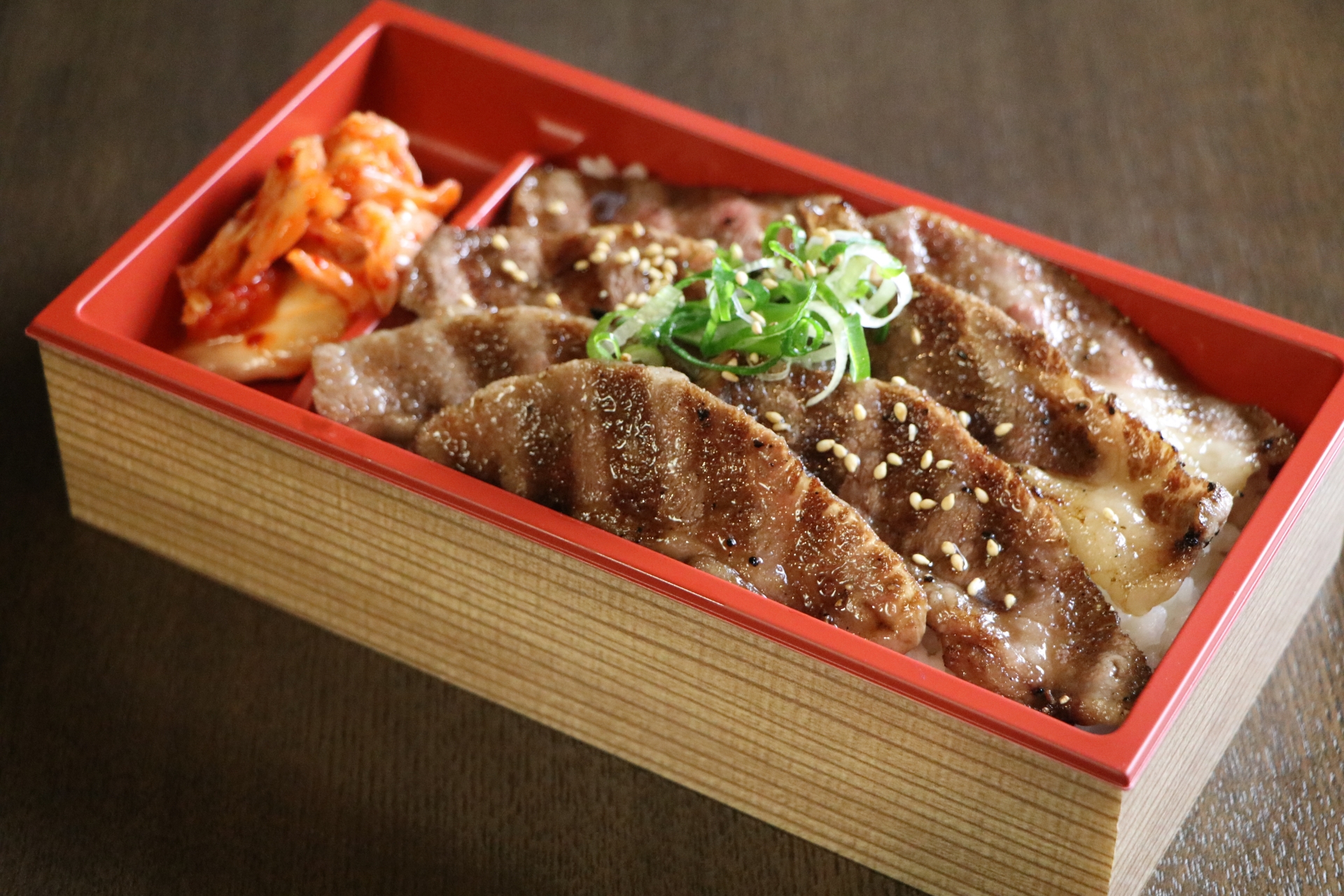
![[Explanation with photos! ] How to freeze and fry croquettes, 5 carefully selected recipes](https://shunkashutou.com/wp-content/uploads/2023/09/b364ee97a71777f9dd2e35fddbbdda72.jpg)
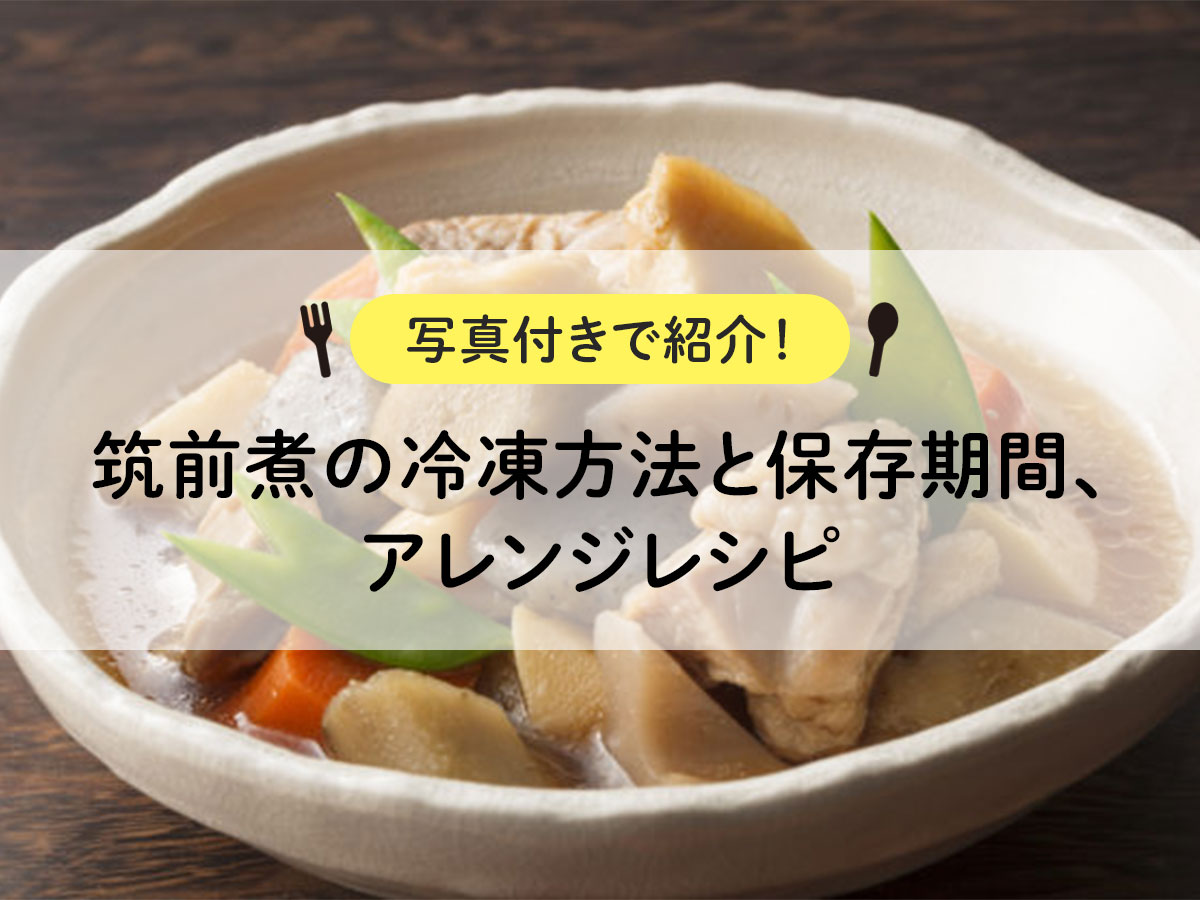
![[Delicious, Convenient, Cheap] Recommended commercial frozen foods for restaurants to purchase](https://shunkashutou.com/wp-content/uploads/2023/07/business-frozen-food-1024x682-1.jpg)
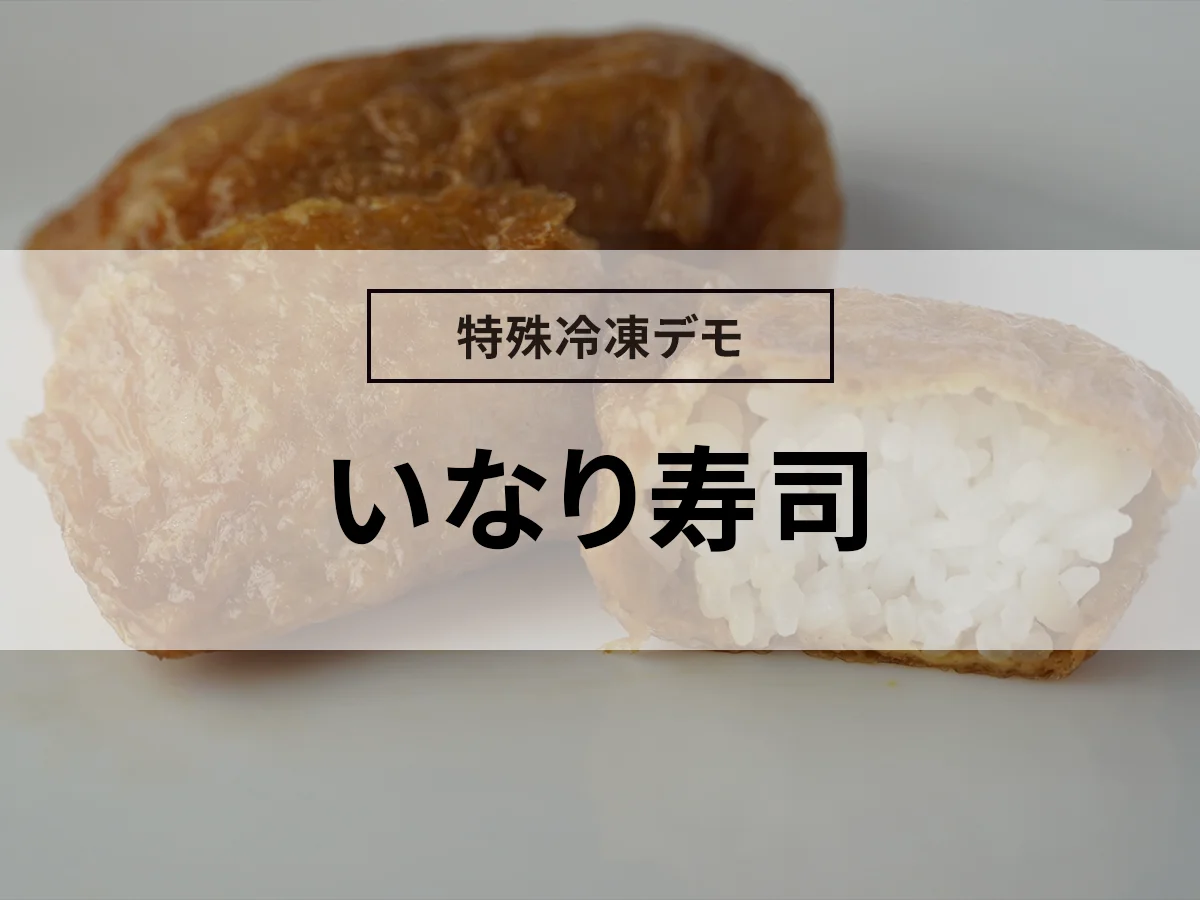
![[Rapid freezers in 2021] Market Trends and Customer Success Stories](https://shunkashutou.com/wp-content/uploads/2020/12/7F9A9CB9-A494-4E6A-946E-079279C596E6.jpeg)
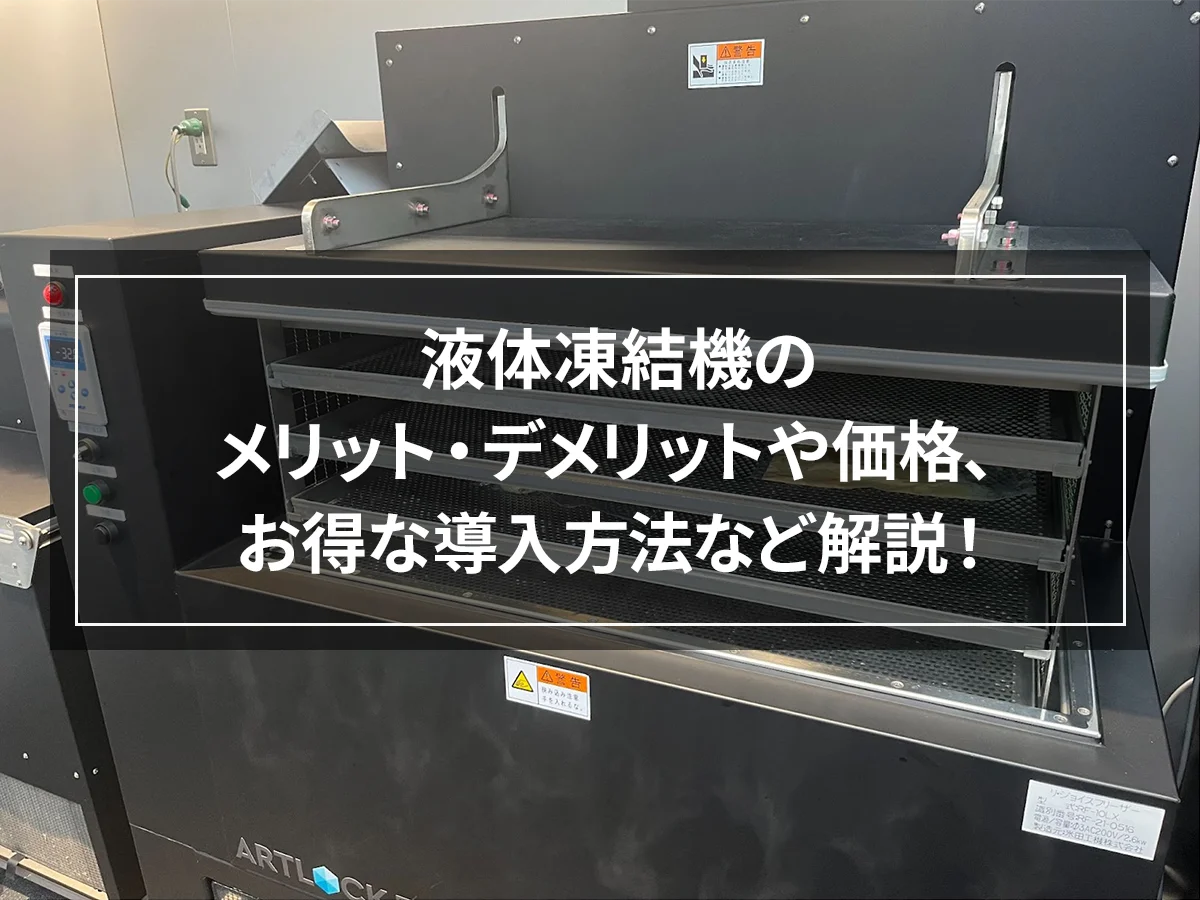

![[Supervised by a nutritionist! ] How to freeze bean sprouts, storage period, and 5 recipes!](https://shunkashutou.com/wp-content/uploads/2023/09/34f4d39c30e79629a89bf54221841964.jpg)
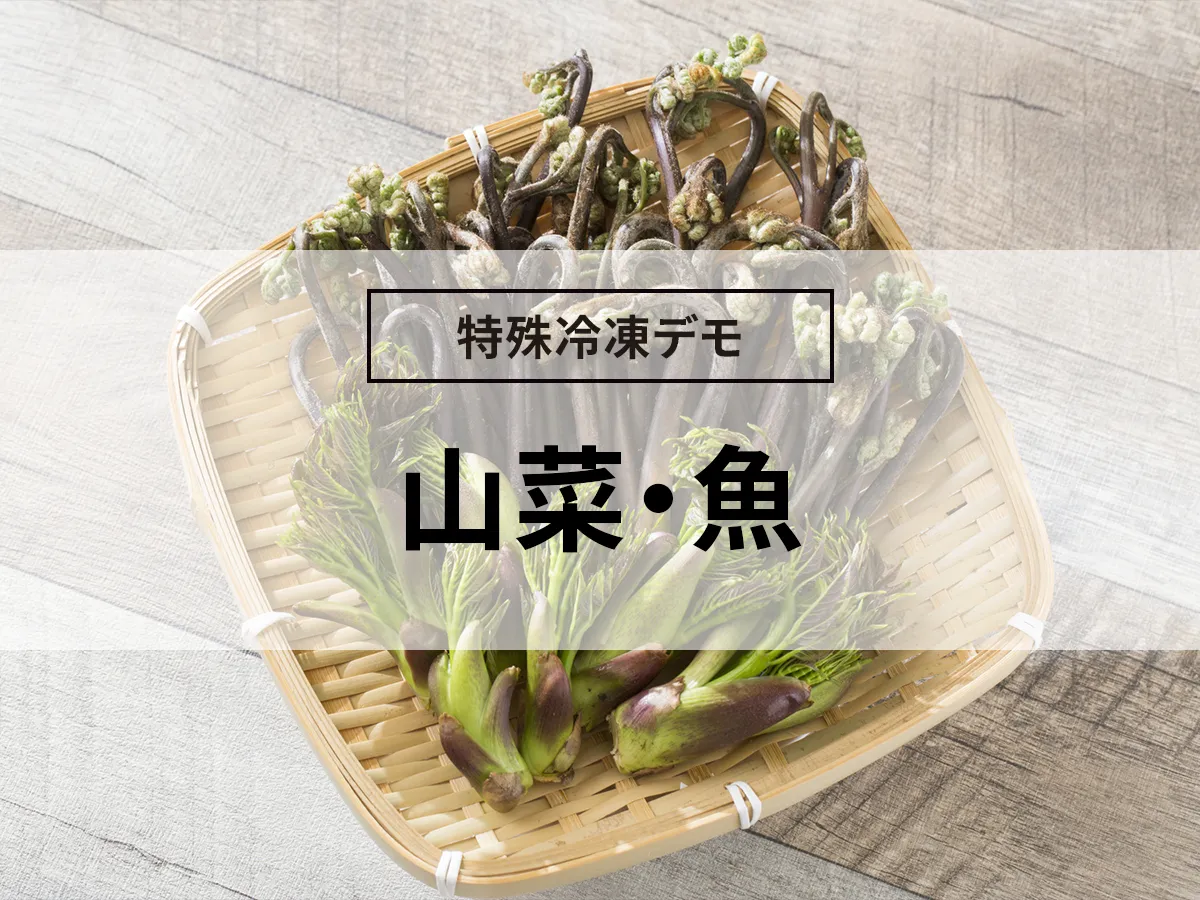
![[Explanation with photos! ] How to freeze pumpkin, storage period, and 5 recipes](https://shunkashutou.com/wp-content/uploads/2023/10/36d3edf3acec7cf27351bd1211e770ac.jpg)

![Freezing garlic, storage period, and 5 recipes! [Explanation with photos! ]](https://shunkashutou.com/wp-content/uploads/2023/10/30693b4b122ff6c57afff367b35bc861.jpg)
![[Tips for making egg rolls that can be frozen] Introducing freezing methods, storage periods, and recipes!](https://shunkashutou.com/wp-content/uploads/2023/10/tamagoyaki-768x512-1.jpg)
![[Introducing trick techniques! ] How to freeze and thaw pancakes](https://shunkashutou.com/wp-content/uploads/2023/09/4f2e9d04709f0c4e5c1769985a49ac8b.jpg)
![[Explanation of how to bake! ] How to freeze gyoza, storage period, and arranged recipes](https://shunkashutou.com/wp-content/uploads/2023/09/c3dca78e4f555cfbcfe88d6e13b19bba.jpg)
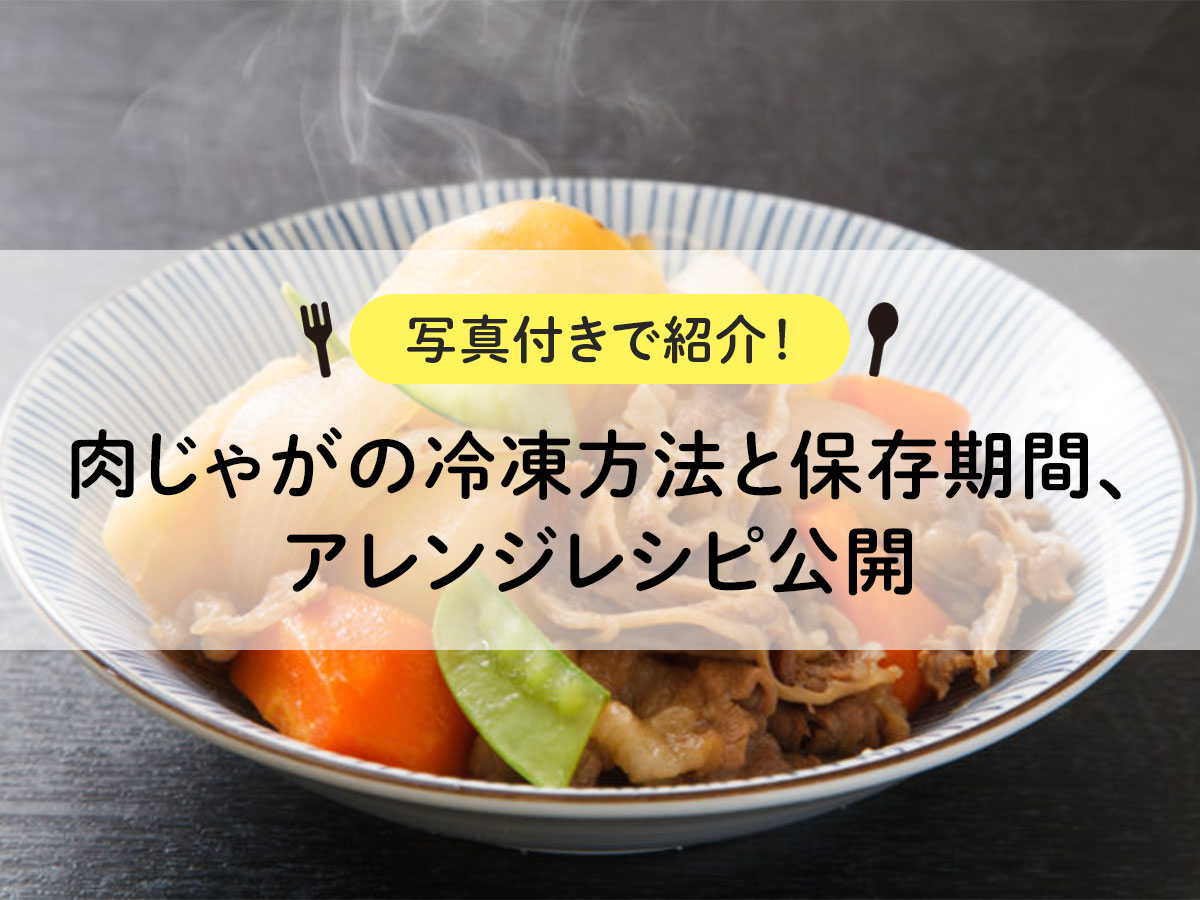
![[It's good to know! ] Introducing how to freeze curry, how long to keep it frozen, and how to thaw it |](https://shunkashutou.com/wp-content/uploads/2023/08/5de5495c896622dc896a8f23d9528300.jpg)
![[How to use leftover sashimi! ] Introducing frozen preservation methods and arrangement recipes](https://shunkashutou.com/wp-content/uploads/2023/10/7451dbe2231dbc559fe002350b8add67.jpg)
![How to freeze apples and what is their nutritional value? Perfect for baby food! [Explanation with photos! ]](https://shunkashutou.com/wp-content/uploads/2023/10/cf0380a4b371d2f43e0f0ed99c7344a2.jpg)
![[Explanation with photos! ] Shiitake mushroom freezing method and storage period, 5 recipes](https://shunkashutou.com/wp-content/uploads/2023/09/shiitake-768x512-1.jpg)
![[Thorough Guide to Preserving Sweets] Introducing the freezing method, storage period, and thawing method in detail!](https://shunkashutou.com/wp-content/uploads/2023/10/bffcbc0b6e79bb1af6e05b930e11e949.jpg)
![[Need to know] 7 points to thaw frozen crab deliciously](https://shunkashutou.com/wp-content/uploads/2023/08/394440560c05fb5b512d75b81a3fae4f.jpg)
![[Dramatically extends the shelf life of vegetables! ] What is blanching process?](https://shunkashutou.com/wp-content/uploads/2023/07/8fce721a563a0e86a740b4d11dc63766.jpg)
![Introducing recipes and methods for good frozen preservation of okra [Explanation with photos! ]](https://shunkashutou.com/wp-content/uploads/2023/10/616c25d6c59f80c7a09effe2edc5ef92.jpg)
![How to freeze potatoes and a great time-saving recipe! [Moms must see! ]](https://shunkashutou.com/wp-content/uploads/2023/10/potato1-768x512-1.jpg)
![[Explanation with photos] How to freeze nagaimo, storage period, and 5 recipes!](https://shunkashutou.com/wp-content/uploads/2023/09/c46c238f2048d76de403dfd81ddad1f3.jpg)
![[Explanation of how to fry! ] How to freeze and thaw pork cutlet, remake recipe!](https://shunkashutou.com/wp-content/uploads/2023/10/0a4143ad8ea0cc6bb6fdab8c74fab407.jpg)

![Introducing how to freeze carrots and recipes [Explanation with photos! ]](https://shunkashutou.com/wp-content/uploads/2023/08/837a12b0247130309b466717f2b8c53c.jpg)
![[Can it be frozen? ] How to freeze cabbage rolls, storage period, and recipe](https://shunkashutou.com/wp-content/uploads/2023/10/f5c1db9a17ef7843ffd45f5ccb160ed5.jpg)
![[Can it be frozen? ] How to freeze konjac and diet recipes](https://shunkashutou.com/wp-content/uploads/2023/09/ec03b3e5cdefedf8f295de7ebb781752.jpg)
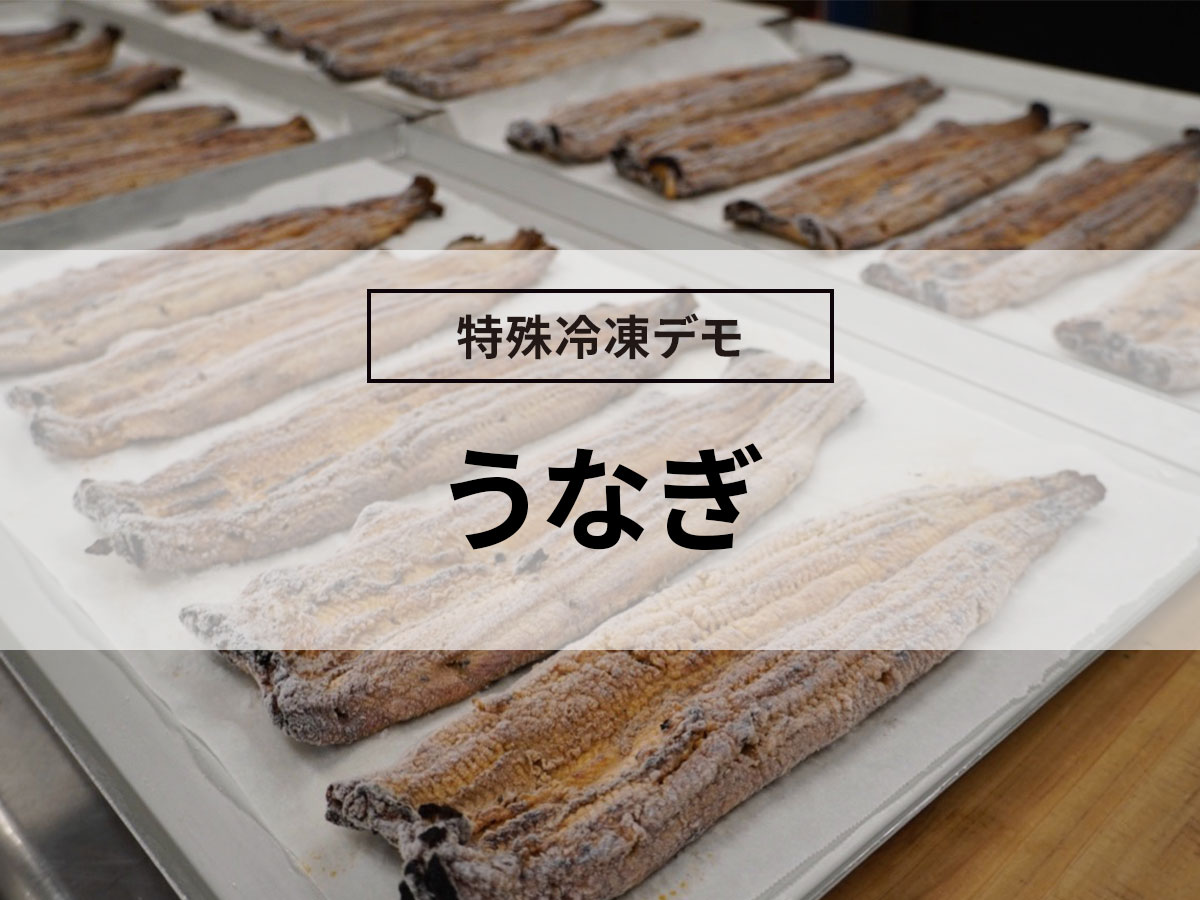

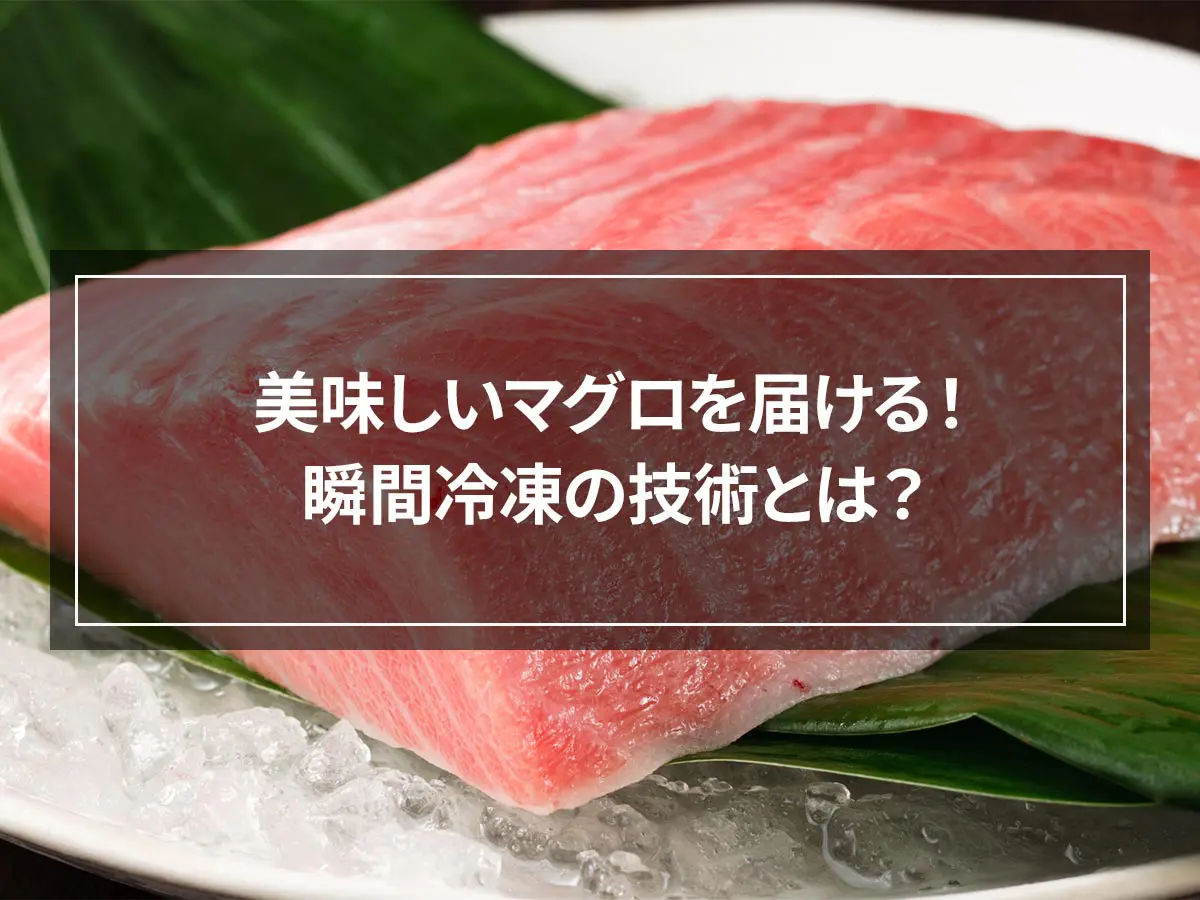
![[Can it be frozen? ] Introducing recipes and methods for freezing avocados!](https://shunkashutou.com/wp-content/uploads/2023/07/7b25b2d45ff983fca2a15b6ad7edf369-1.jpg)
![How to freeze mizuna and 5 recipes! [Explanation with photos! ]](https://shunkashutou.com/wp-content/uploads/2023/09/b22c59559b7316b40d35d2555434791e.jpg)
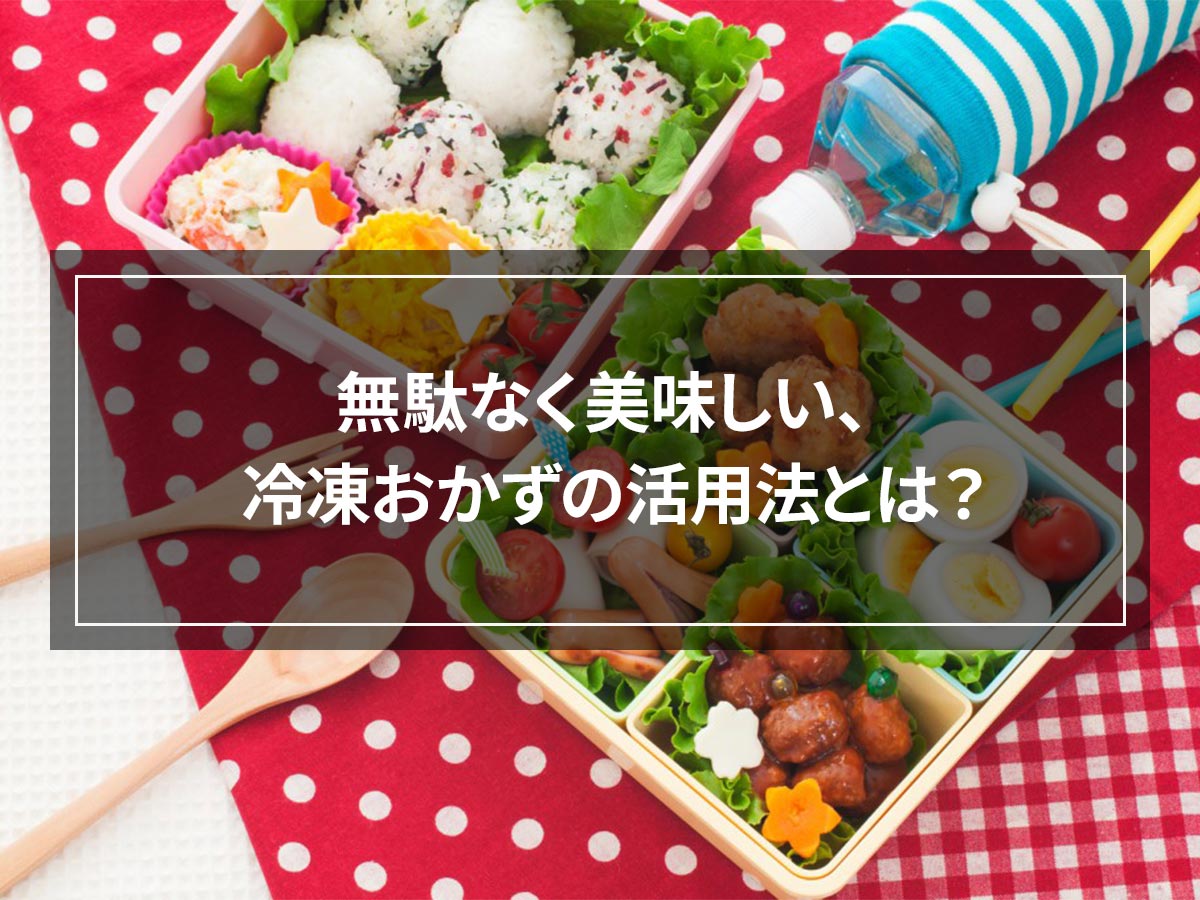
![[Can it be frozen? ] How to freeze mashed potatoes, how long they can be stored, and how to use them](https://shunkashutou.com/wp-content/uploads/2023/09/b7f3f25102051473b7c2f9452840a6f4.jpg)
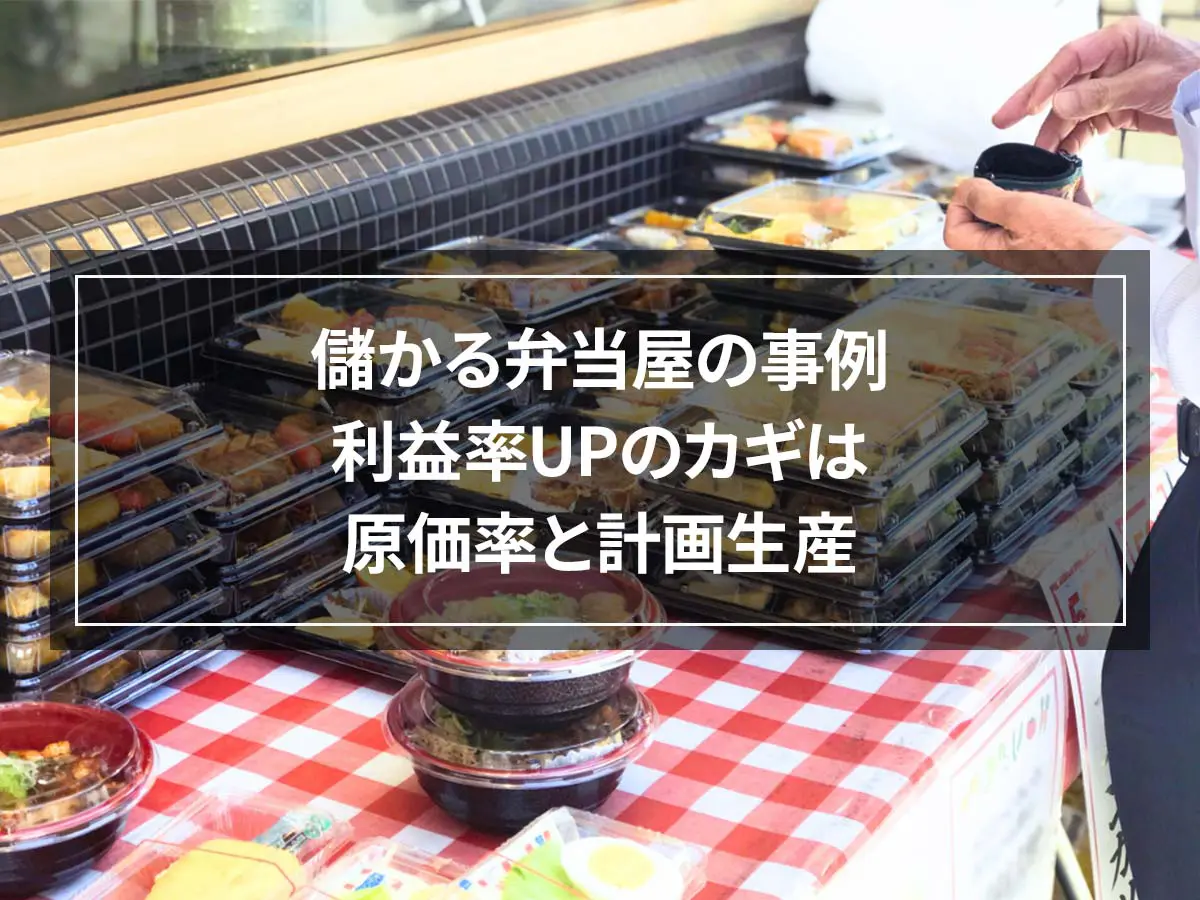


![[Explanation with photos! ] A good way to freeze lotus roots and recipes to use them!](https://shunkashutou.com/wp-content/uploads/2023/10/adac4ea3f269121c4cb5e74b323508f5.jpg)
![[Nutrition remains the same! ? ] Introducing how to use frozen vegetables and recommended recipes](https://shunkashutou.com/wp-content/uploads/2023/10/vegetables-reito-1-1-768x511-1.jpg)
![How to freeze natto, expiration date, baby food and carefully selected recipes [Explanation with photos! ]](https://shunkashutou.com/wp-content/uploads/2023/07/055e5e865986b68d11c3f49f11ea6008.jpg)
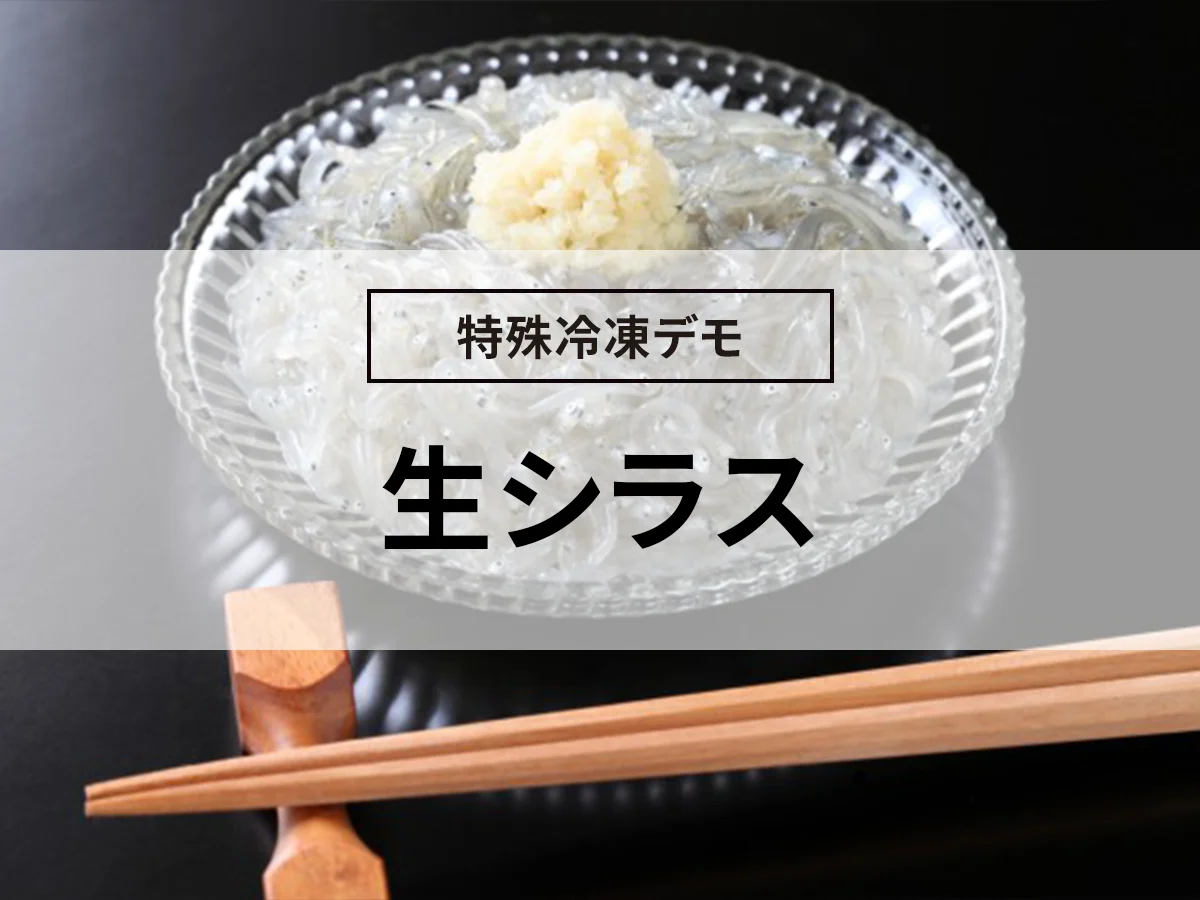
![[Import/Export Industry] Advantages and success stories of introducing rapid freezer](https://shunkashutou.com/wp-content/uploads/2015/05/jirei_yunyu_img_01.jpg)
![[Long-lasting freshness! ] Explaining the advantages and disadvantages of chilled storage and chilled transportation](https://shunkashutou.com/wp-content/uploads/2024/07/64b437bd976e4ef73a85dbb64cdf9fc8.webp)
![[How to freeze and store clams to improve nutrition] How to freeze and thaw clams and 5 recipes!](https://shunkashutou.com/wp-content/uploads/2023/07/ecfa61188368277d34c95d6667bf15fe.jpg)
![Introducing how to freeze and thaw whitebait, as well as recipes for its use [Full of nutrition! ]](https://shunkashutou.com/wp-content/uploads/2023/10/04d15012ec36f91a5574f63dfa9d4771.jpg)

![[How long does it last? ] How to freeze cooked rice and how long it can be stored](https://shunkashutou.com/wp-content/uploads/2023/10/7e31499b015d58f220536e3274a41bf2.jpg)
![[Explanation with photos! ] How to freeze saury, storage period, and 5 recipes!](https://shunkashutou.com/wp-content/uploads/2023/10/fff0f92d808aca2392b3eb576f218f08.jpg)

![[Mass production and space saving] What is the secret of the spiral freezer structure?](https://shunkashutou.com/wp-content/uploads/2024/08/f564637ad1713707bc4672347d147d5e.webp)
![How to freeze/thaw turnips, storage period, and 5 recipes [Explanation with photos]](https://shunkashutou.com/wp-content/uploads/2023/09/eae0789d04cc4971cf4232963b4d2231-1.jpg)
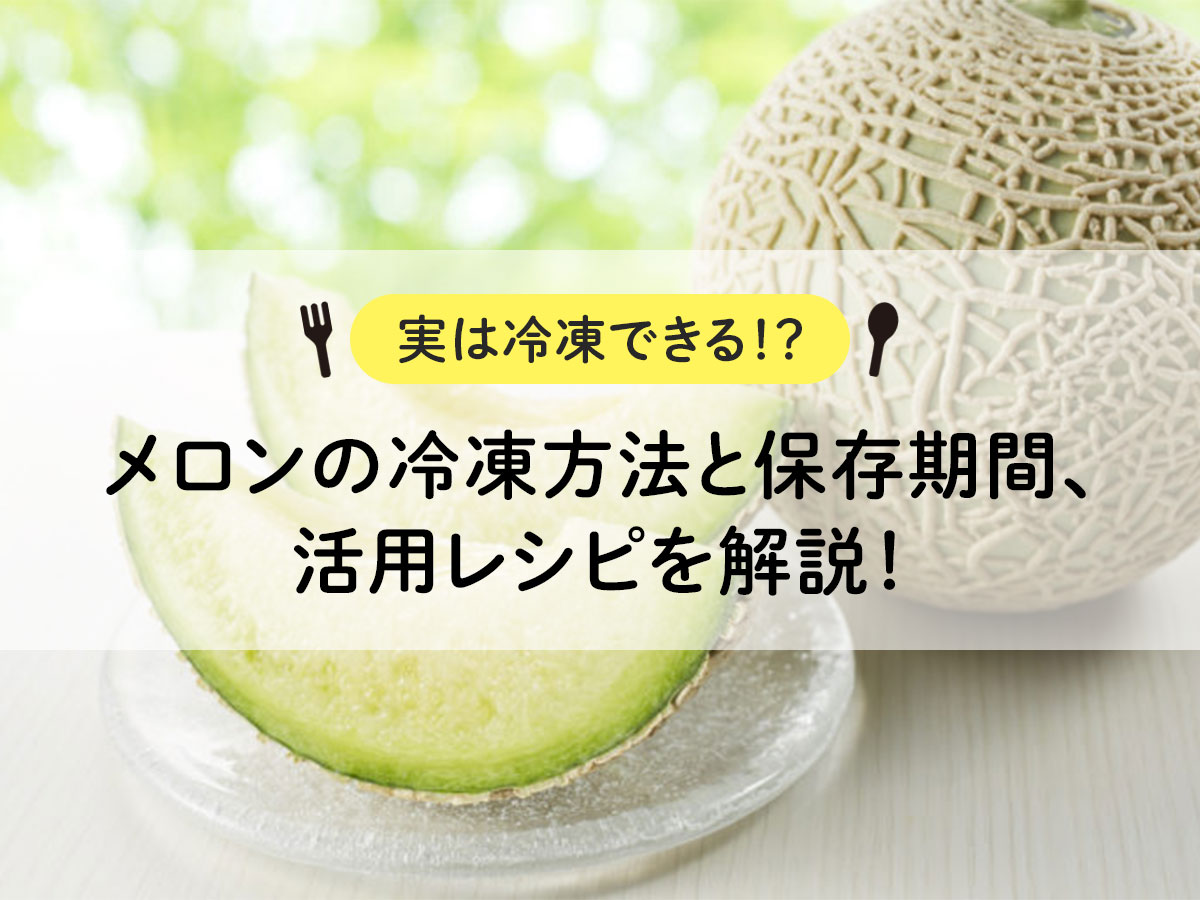
![[Recommended for lunch boxes too! ] Introducing recipes and methods for freezing pasta!](https://shunkashutou.com/wp-content/uploads/2023/10/93f66b71b92cbe1085d41c4ed80d7726.jpg)
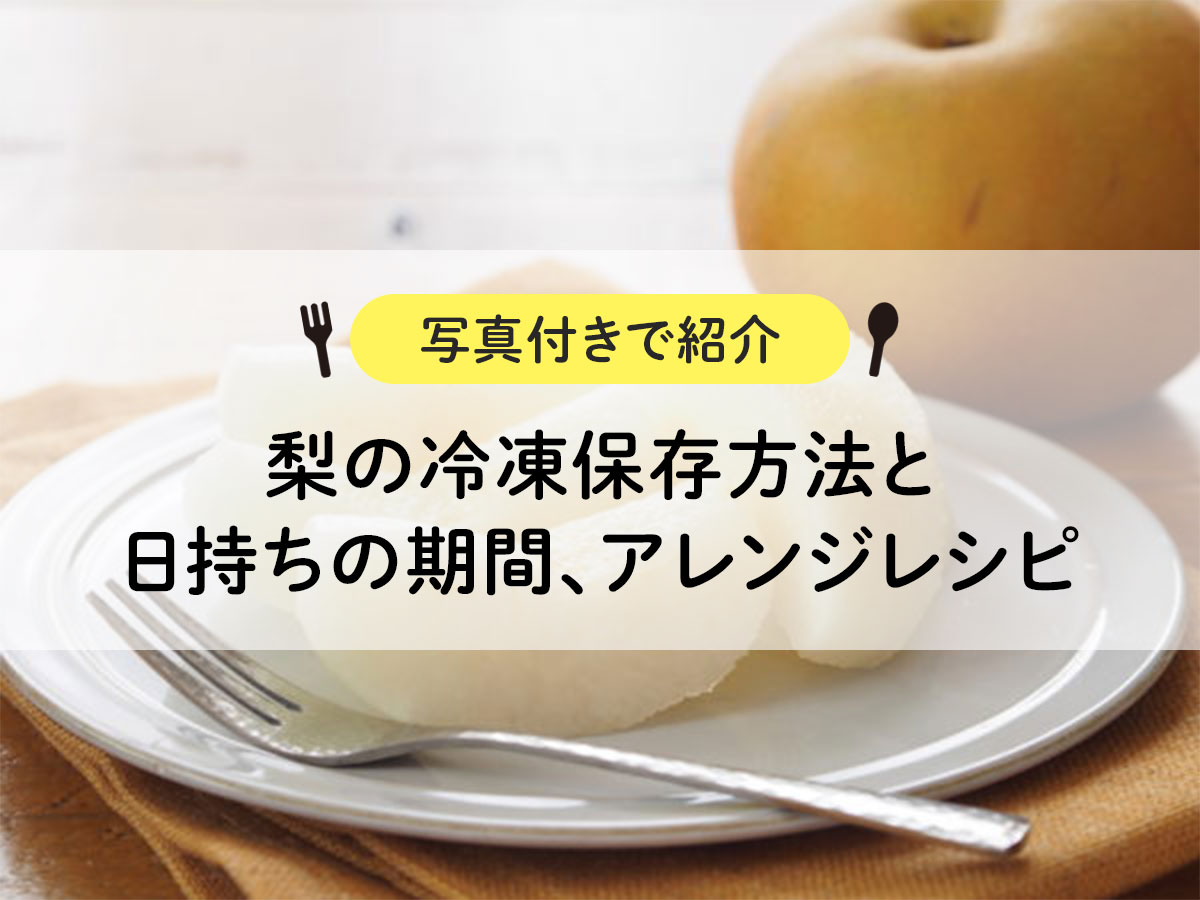
![[Can it be frozen?] Stew freezing method, storage period, and arrangement recipe](https://shunkashutou.com/wp-content/uploads/2023/10/f599b814ea21eef57604e4ceb2518d5b-1.jpg)
